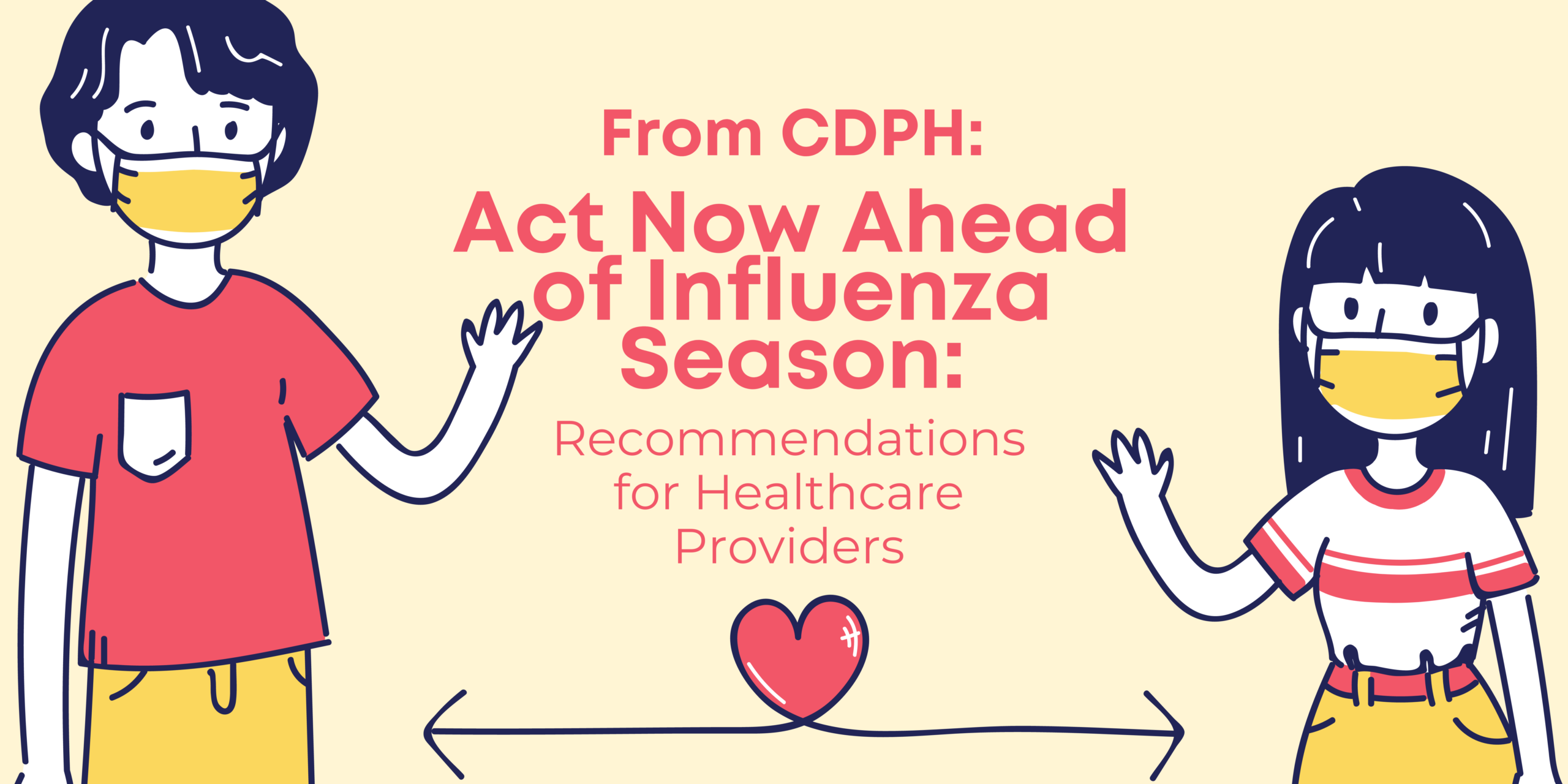Key Messages
- Influenza activity in California is expected to increase in the coming
- California Immunization Registry (CAIR2) data show the pace of influenza vaccination decreasing in October and November 2021 despite ample vaccine
- As the holiday season begins, providers should:
- Large influenza outbreaks are occurring at post-secondary institutions in the United States.
- Detection of influenza A(H3N2) viruses by clinical and public health labs nationwide has increased recently, most frequently among young adults. This represents the first significant activity of the 2021-2022 flu season (and the first since March 2020). Influenza A (H3N2) predominant seasons can be severe, especially for older adults and young
- Influenza and SARS-CoV-2 multi-plex testing should be pursued when feasible. Providers caring for persons with respiratory illnesses in inpatient and congregate settings should test them for influenza and SARS-CoV-2. Providers should test outpatients for influenza (as well as SARS-CoV-2) when testing will affect decisions on clinical management or infection
- Provide influenza antiviral treatment as soon as possible for any patient with confirmed or suspected influenza who is: a) hospitalized; b) at higher risk for influenza complications; or c) developing progressive illness.
- For high-risk persons with influenza-like illness:
- Test the patient for both influenza and SARS-CoV-2. Two specimens might need to be collected if influenza and SARS-CoV-2 multi-plex testing is not
- Start influenza antiviral treatment immediately. Decisions about starting influenza antiviral treatment should not wait for laboratory confirmation of
- If the patient tests negative for influenza, influenza antiviral treatment can be
- If the patient tests positive for SARS-CoV-2, SARS-CoV-2 treatment (either with an anti-SARS-CoV-2 monoclonal antibody or authorized oral antiviral treatment) should be considered in outpatients at high risk for disease progression as outlined in product
- High risk patients co-infected with influenza and SARS-CoV-2 should receive treatment for both viruses. EUAs for anti-SARS-CoV-2 therapy should be reviewed prior to treatment to ensure patients meet
- Clinicians should consider mitigation measures, including influenza antiviral post- exposure prophylaxis, during influenza outbreaks in long-term care facilities. Contact your local health department for consultation on suspected outbreaks at college campuses or other
- Besides getting immunized, other everyday actions can stop the spread of respiratory viruses:
- Continue to wear a mask when recommended or required in high-risk settings.
- Stay away from people who are
- Stay home when sick for at least 24 hours after symptoms go away. Persons who test positive for SARS-CoV-2 should isolate for 10 days after symptom onset (or date of positive test if no symptoms are present).
- Cough or sneeze into your elbow, arm, or disposable tissue. If disposable tissue is used, use hand sanitizer or wash hands
- Wash hands frequently and thoroughly with soap and warm water or use an alcohol-based hand
- Avoid touching your eyes, nose, and
- See our Tips for Protecting Yourself and Others This Holiday Season for additional
Influenza Resources
Influenza Promotional Materials Resources (eziz.org)
